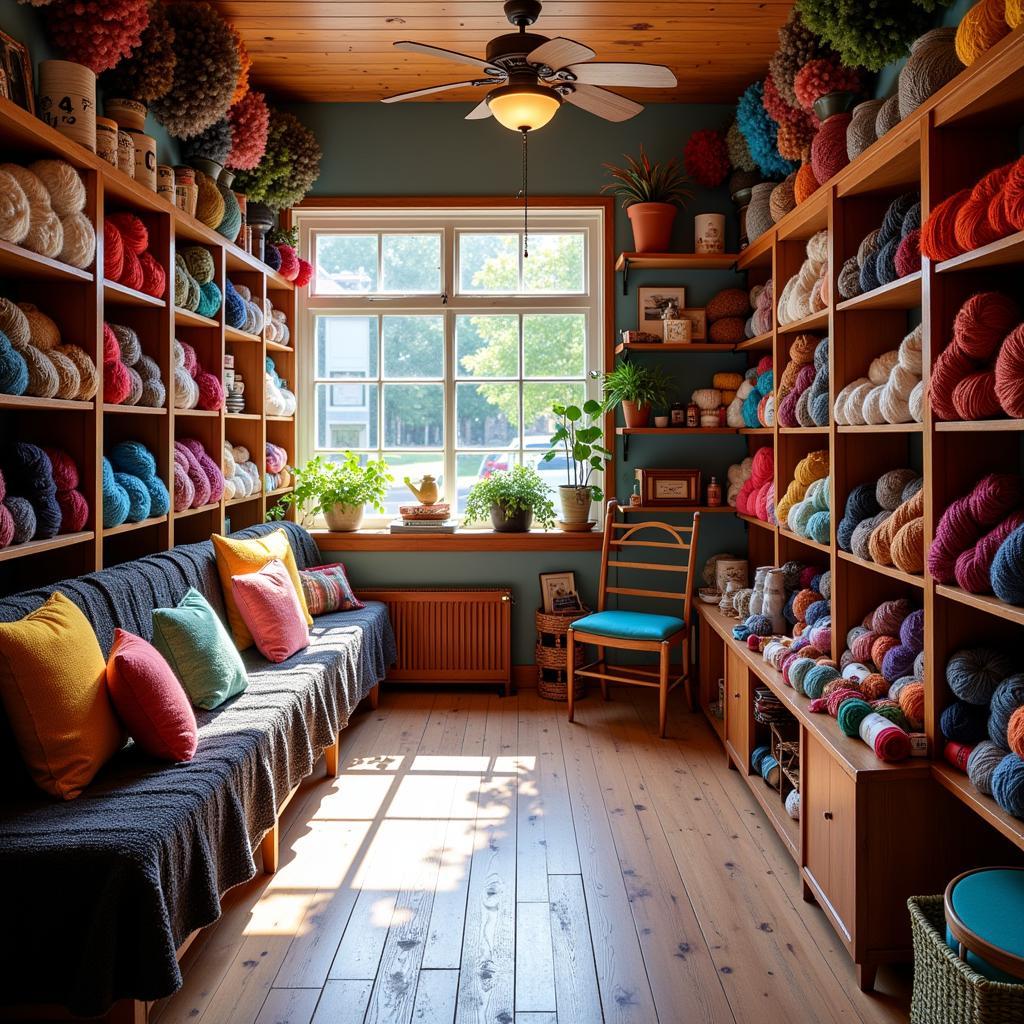Exploring the Beauty of Biophilic Art
Biophilic Art is an exciting emerging trend that connects us to the natural world through artistic expression. It’s more than just paintings of landscapes; it’s about incorporating the principles of biophilia – our innate human connection to nature – into artistic creations. This can manifest in various forms, from using natural materials to depicting natural patterns and processes, creating art that fosters a sense of well-being and tranquility. After the initial introduction of modern nature wall art, let’s delve deeper into this captivating realm.
Understanding the Essence of Biophilic Art
Biophilic art seeks to evoke the positive emotions we experience when immersed in nature. It’s about bringing the outdoors in, blurring the lines between the built environment and the natural world. This art form taps into our inherent affinity for nature, reminding us of our connection to the earth and fostering a sense of peace and harmony. This connection can be as simple as the soothing presence of bonsai wall art or as complex as a large-scale installation incorporating living plants and natural light.
The Impact of Biophilic Art on Well-being
Studies have shown that exposure to nature can reduce stress, improve cognitive function, and enhance creativity. Biophilic art aims to replicate these benefits by bringing elements of nature into our living and working spaces. Imagine the calming influence of a preserved moss wall art piece in your home or office.
The incorporation of natural elements, like those found in palm leaf wall art, can create a more relaxing and inspiring atmosphere. These pieces can serve as a visual reminder of the beauty and tranquility of nature, offering a moment of respite in our busy lives.
Key Elements of Biophilic Art
Biophilic art isn’t restricted to a single medium or style. It encompasses a wide range of artistic expressions, all united by the common thread of incorporating natural elements and principles.
Natural Materials and Textures
Many biophilic artists work with natural materials like wood, stone, water, and plants. These materials bring an authentic touch of nature into the artwork, creating a tactile and sensory experience.
Natural Forms and Patterns
From the fractal patterns of leaves to the flowing lines of a river, nature is full of inspiring forms and patterns. Biophilic art often incorporates these patterns, creating visually appealing and harmonious compositions.
Connections to Local Ecosystems
Biophilic art can also reflect the specific characteristics of a local ecosystem, celebrating the unique flora, fauna, and landscapes of a particular region.
The Role of Light and Shadow
Light and shadow play a crucial role in biophilic art, mimicking the natural interplay of light and dark found in nature. This can create a sense of depth and dynamism, adding another layer of complexity to the artwork.
Incorporating Biophilic Art into Your Life
Bringing biophilic art into your life can be as simple as adding a few nature-inspired prints to your walls or as ambitious as commissioning a large-scale installation. You could consider moss for wall art to bring a touch of nature indoors.
Choosing the Right Pieces
When selecting biophilic art, consider the space you’re working with and the overall aesthetic you want to create. Think about the colors, textures, and forms that resonate with you and evoke a sense of peace and connection to nature.
Creating Your Own Biophilic Art
You don’t need to be a professional artist to create your own biophilic art. Simple projects like pressing flowers, creating nature mandalas, or arranging natural objects can be a rewarding way to connect with nature and express your creativity.
Conclusion
Biophilic art offers a powerful way to reconnect with nature and enhance our well-being. By incorporating natural elements and principles into artistic creations, we can bring the restorative power of nature into our everyday lives. So, embrace the beauty of biophilic art and transform your surroundings into a haven of tranquility and inspiration.
FAQs
-
What is biophilic art?
Biophilic art is art that incorporates natural elements and principles to connect us with nature. -
How can biophilic art benefit me?
Biophilic art can reduce stress, improve cognitive function, and enhance creativity. -
What are some examples of biophilic art?
Examples include paintings of landscapes, sculptures made from natural materials, and installations incorporating living plants. -
Where can I find biophilic art?
You can find biophilic art in galleries, online shops, and even create your own. -
How do I choose the right biophilic art for my space?
Consider the size, colors, and textures that resonate with you and complement your existing decor. -
Can I create my own biophilic art?
Absolutely! Simple projects like pressing flowers or arranging natural objects can be a great starting point. -
What is the cost of biophilic art?
The cost varies depending on the size, materials, and artist.
More Questions? More Resources!
Looking for more information on incorporating nature into your home décor? Explore these related articles on our website:
- Bonsai wall art offers a unique and elegant way to bring the tranquility of nature into your living space.
- Explore the beauty of preserved moss wall art and create a stunning, low-maintenance living wall feature.
Need specific advice on choosing the right biophilic art? Our team is here to help!
Contact us:
Phone: 02462573573
Email: [email protected]
Address: Savico Megamall, 7-9 Đ. Nguyễn Văn Linh, Gia Thụy, Long Biên, Hà Nội 10000, Việt Nam.
We offer 24/7 customer support.


